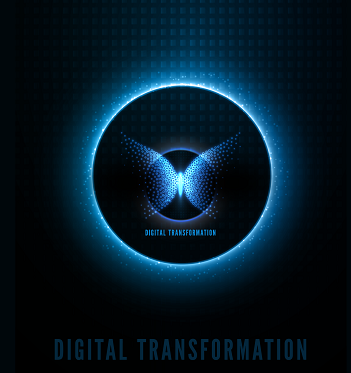Digital Transformation – The Connected Learning Community Approach
This is the fifth column we present by Roshini Kumar on Digital Transformation of Education

By Roshini Kumar
All ecosystems require balance in order to function successfully. Each element and party within the system has a role to play and through this will influence the sum of the parts that represent the learning process. Keeping such an ecosystem in balance requires key partnership commitments between schools, educational institutions, students, parents, and government agencies in order to sustain a long-term environment.
Within the ecosystem, access to appropriate and reliable information is crucial so that stakeholders in all parts of the system can make informed decisions and take appropriate action. The ecosystem must also address the time and cost dimensions in automation and the streamlining of key tasks, and allow an evolutionary approach to cost management. The notion of connected learning today and in the future also must consider the challenges of changing social and political pressures in a world of constant technological innovation and improvement.
The Connected Learning Community Approach enables such an ecosystem. The Connected Learning Community is a vision for a world that encourages lifelong learning. It removes time and space constraints and enables a world of flexible learning, rich content, community involvement and more. The Connected Learning Community approach is not a single entity or product, but a series of architected frameworks, global standards, and best practices. The following outlines this framework for improving the learning ecosystem, including learning, teaching, parenting and administration scenarios made possible when applying this framework, and the design objectives for making this potential real.
A Framework for Improving the Learning Ecosystem
Although specific products such as hardware and software come and go over time, the fabric that binds a learning ecosystem must endure through successive generations. This fabric must also be sensitive to change in such a way that it is capable of progressive improvement without the need for expensive, large-scale replacement in future years.
Engineering such an ecosystem requires processes, standards and a range of technology and architecture that map directly into learning activities.

This mapping can be viewed as a framework of building blocks tied together by an underlying fabric of interoperability, communications and collaboration services, school business intelligence, and technology standards. These are the building blocks of the technology infrastructure that will address challenges found in the learning ecosystem of today, and enable the Connected Learning Community of tomorrow.
School Data Interoperability
Data interoperability enables disparate applications whether centrally hosted, or locally hosted and administered to share and orchestrate student data lowering total costs and improved by reducing double entry of data. Data interoperability normally consists of:
- A common data model for student data, expressed as XML schemas
- A common set of protocols for exchanging data in the common data model between application
- A data security and data privacy model enforced by the system
- A set of common business rules governing the sharing, replicating, and updating of student data in a reliable and secure fashion
Technology Standards
Schools need a flexible infrastructure that fits their unique needs. This infrastructure should be based on open technology standards such as XML and Web-based services communicating over the HTTP protocol. This allows loosely coupled systems to function as one. In this fashion, mission-critical information can be housed in secure data centers which can be centrally supported, and various services can be provided through application service providers according to service level agreements. This technology infrastructure is modular in nature, enabling the ability to expand service offerings while reducing the need for major technology infrastructure replacement initiatives. By using open standards over loosely coupled networks, governance of and accountability for these resources can be assigned to a single agency. This approach yields a flexible solution which facilitates the organizational agility required by the demands of the ecosystem. Global information technology standards including the Schools Interoperability Framework (SIF) and the Instructional Management Systems Global Learning Consortium (IMS) are also necessary components of the infrastructure.
Communications and Collaboration Services
The communications and collaboration fabric provides essential services which will be consumed by the student, parent, teacher, and administrator education spaces. These services include:
Messaging
- A robust messaging infrastructure which can provide:
- “Safe” or filtered e-mail for students
E-mail services for parents, students, teachers, and administrators available through standards-compliant clients or Web browsers in multiple form-factors, including mobile phones and personal digital assistants - Services for group collaboration including document storage, workflow automation, and discussion areas
Internet Access
A robust infrastructure which can provide “safe” or “filtered” Internet access for students and teachers, able to apply policies as determined at government, local education authority, school, teacher, and/or parental levels. Furthermore, teachers will require the ability to easily monitor and manage access to certain technologies in order to efficiently manage classroom and learning activities.
Calendaring/Scheduling
Provides access to individual and group calendars, delegated administration for calendars, and scheduling of individual time and resources. Calendaring services should also provide access to calendar information (such as free/busy time) in a flexible fashion, enabling the secure and reliable sharing of calendar information with other systems.
Presence
A robust presence service provides information about users’ online status. The presence service needs to respect an individual’s right to privacy by enabling them to control who can see their presence and by overriding their default presence status.
Real-time Communication and Collaboration
Includes services such as instant messaging (including computer to mobile phone), chat, virtual classrooms, shared whiteboards, application sharing, video/Web conferencing, and audio conferencing (including computer to computer, computer to phone, and phone to phone).
Video/Web Conferencing
Includes scheduling of resources such as network bandwidth and optimized routing for resource-constrained networks. The scheduling of people and physical resources should be coordinated with the calendaring/scheduling service.
Real-time and On-demand Information Delivery
Includes reliable and secure transmission in network-efficient matters enabling users to view live presentations and review them later in an on-demand fashion.
Notifications
The notifications fabric is responsible for the secure and reliable delivery of information to users based on their user profile and presence status. The notifications fabric is a consumer of profile information and presence service (is the user online) so that information can be securely delivered to the user according to business logic determined by the user. The notifications fabric should be robust to handle delivery of information through e-mail, posting to a user’s workspace, SMS messages to mobile phones, delivery of information to an ordinary phone, and even delivery through fax or surface mail if necessary.
Content Management
All parties in the learning ecosystem will need to create, publish, and manage their own Web content by means of familiar tools such as Web browsers and office productivity suites. They will require easy-to-use tools that enable them to create and publish rich, personalized content directly to Web sites. A content management system will provide the tools to minimize publishing time in order to spend more time fostering learning in the learning ecosystem.
School Business Intelligence Services
The school business intelligence services are consumers of the data stored in the various school information systems. Through automated analysis techniques, these services generate reports on various aspects of student, teacher, and school performance. School business intelligence services enable the various stakeholders to have the necessary information to make informed decisions. Furthermore, the school business intelligence services are consumed by the various education spaces used by teachers, students, parents, and administrators – making it easy for the various stakeholders to identify an issue, take action, and then measure the impact of that action.
These building blocks create the framework for an effective and comprehensive learning system, the Connected Learning Community in which students, teachers, parents, and administrators benefit from the flexibility and connectedness of anywhere, anytime learning.
Digital Transformation – The Connected Learning Community Approach
Today’s learning faces many barriers, including social, economic and technology constraints. Yet technology can effectively address these challenges.
In order for technology to improve education, schools must consider the total environment and fully understand the learning ecosystem. Barriers present in the ecosystem must be illuminated and appropriate technology-based solutions must be applied to overcome those barriers and thereby assist educational organizations in achieving their goals.
Schools today require flexible and cost-effective growth, including the use of existing technology. Learning ecosystem must be agile, capable of changing and growing as new innovations occur in teaching-learning, technology. Envision a community of learning for teachers, parents, students, and administrators.
Write to me I will get expert opinions to address your concerns.

ROSHINI KUMAR
Thought Leader –
Digital Transformation
roshinik@lyceecorp.com
You can access previous columns by Roshini Kumar here:
You can read the first column here
You can read the second column here
You can read her third column here
You can read her fourth column here
Listen to Roshini Kumar talk about overall #Digital #Strategy in the digital transformation of education 👇